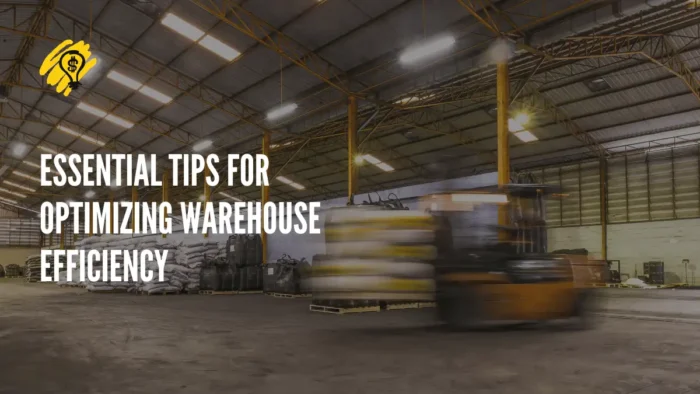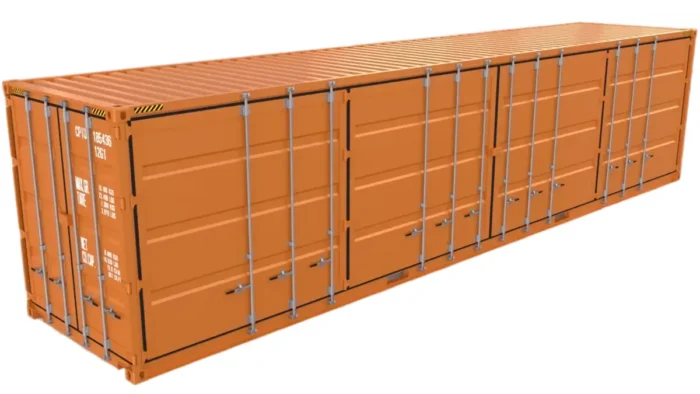Optimizing warehouse efficiency has become a strategic imperative in the fast-paced landscape of modern business. Warehouses serve as the backbone of supply chains, ensuring timely and accurate delivery of goods to meet customer demands. Companies must leverage innovative approaches and technologies to streamline their warehouse operations to stay competitive.
This article will explore essential tips for optimizing warehouse efficiency and provide actionable insights for those aiming to enhance their logistics and distribution processes.
1. Embrace Technology
One of the most transformative strategies for warehouse optimization is the integration of advanced technologies and automation. From robotic systems to smart inventory management software, technology can significantly enhance precision and speed in warehouse operations.
For example, automated picking and packing systems can dramatically reduce fulfillment times, minimize errors, and boost overall efficiency. Additionally, implementing a Warehouse Management System (WMS) can provide real-time visibility into inventory levels, order statuses, and resource utilization, enabling better decision-making and resource allocation.
Beyond the obvious benefits of speed and accuracy, technology can also contribute to a safer work environment. Collaborative robots, or cobots, can work alongside human employees, handling repetitive and physically demanding tasks, thereby reducing the risk of injuries.
Embracing technology is not just about staying current; it’s about creating a more agile and responsive warehouse that can adapt to the evolving demands of the market.
2. Optimize Layout and Space Utilization
Warehouse layout and space utilization play a pivotal role in overall efficiency. A well-designed warehouse layout can minimize travel time, reduce congestion, and optimize the flow of goods from receiving to shipping.
Consider implementing a zone-picking system where products are grouped based on location or popularity, allowing for more efficient order fulfillment. Investing in vertical space utilization through high-density storage solutions, such as automated storage and retrieval systems (AS/RS), can maximize available warehouse space.
Regularly reassessing and reorganizing the warehouse layout based on changing inventory needs and order profiles is crucial. Dynamic slotting, for instance, involves regularly adjusting product placement based on popularity, ensuring that frequently picked items are easily accessible. By strategically organizing the warehouse and utilizing available space effectively, you can reduce operational costs and enhance the overall productivity of your logistics operations.
3. Prioritize Training and Employee Engagement
While technology plays a crucial role, the human element remains irreplaceable in warehouse operations. Investing in training programs for warehouse staff is essential to ensure that employees are proficient in using new technologies and following optimized processes. Well-trained staff are more likely to identify inefficiencies, troubleshoot technical issues, and contribute to a culture of continuous improvement.
Employee engagement is equally vital for warehouse efficiency. Recognizing and rewarding achievements, fostering open communication, and providing opportunities for skill development can contribute to a motivated and productive workforce. In addition, involving employees in the decision-making process and encouraging feedback can lead to valuable insights for further optimization. Recognizing the importance of the human factor in warehouse operations is key to building a resilient and adaptive workforce that can thrive in the dynamic landscape of modern logistics.

4. Comprehensive Solutions
To further enhance warehouse efficiency, consider partnering with a full-service nationwide supplier that caters to all your pallet, warehouse, shipping, packaging, and recycling needs. These specialized suppliers offer a one-stop solution, streamlining the procurement process and ensuring seamless integration of products and services into your operations. From high-quality Euro pallets to innovative packaging solutions, these suppliers can provide the essential tools to optimize your warehouse.
Collaborating with a reliable supplier simplifies the sourcing process and ensures product quality and compatibility consistency, contributing to overall operational efficiency. Integrating a reputable supplier into your optimization strategy can serve as a strategic advantage, providing the necessary resources to create a well-rounded and highly efficient warehouse ecosystem.
5. Green Initiatives for Warehouse Efficiency
As sustainability becomes an increasingly important consideration in business operations, implementing eco-friendly practices in warehouse management can contribute to both efficiency and environmental responsibility. This involves adopting reusable and recyclable packaging solutions, minimizing waste, and implementing energy-efficient technologies. Euro pallets, known for their durability and reusability, are an excellent choice for companies committed to sustainable logistics.
Integrating green initiatives aligns with corporate social responsibility goals and can lead to cost savings in the long run, making your warehouse operations more efficient and environmentally friendly.
6. Continuous Monitoring and Data Analytics
Harnessing the power of data through continuous monitoring and analytics is a crucial aspect of warehouse optimization. Implementing sensors and Internet of Things (IoT) devices throughout the warehouse allows for real-time tracking of inventory, equipment, and employee activities. Analyzing this data provides valuable insights into trends, identifies improvement areas, and helps make informed decisions.
You can proactively address challenges, reduce downtime, and enhance warehouse efficiency by employing data-driven optimization strategies like demand forecasting and predictive maintenance. Integrating data analytics into warehouse management is not a one-time effort but an ongoing process that ensures adaptability to changing market dynamics and evolving operational needs.
Conclusion
In the relentless pursuit of warehouse efficiency, you must adopt a multifaceted approach that integrates technology, strategic partnerships, and a commitment to sustainability. Embracing automation, optimizing layout and space utilization, and prioritizing employee training creates a foundation for streamlined operations. Partnering with a full-service nationwide supplier adds convenience and reliability, while sustainable practices demonstrate a commitment to efficiency and environmental responsibility. Continuous monitoring through data analytics serves as the compass for ongoing optimization and helps you navigate the dynamic landscape of modern logistics. By incorporating these strategies into the fabric of warehouse management, companies can not only meet the challenges of today’s market but also lay the groundwork for sustained success in the future.





